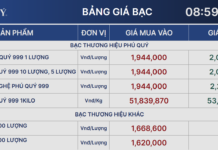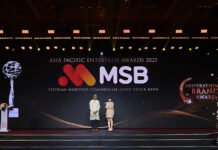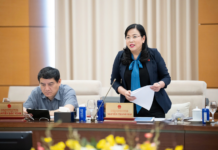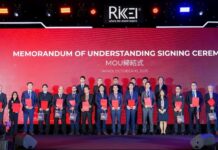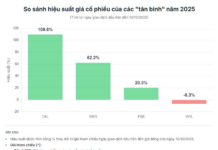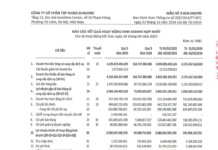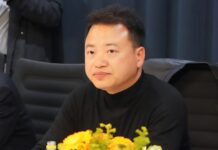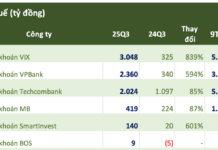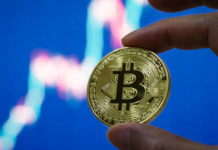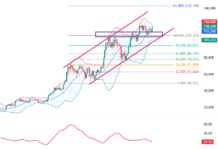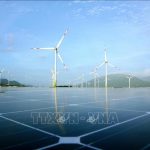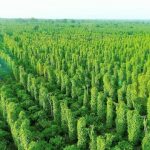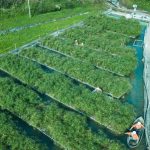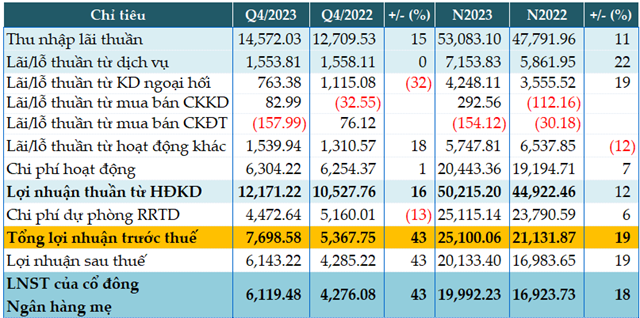At the Green Finance Forum 2024, held on the afternoon of July 22, 2024, Dr. Can Van Luc – Economist and Member of the Monetary and Financial Policy Advisory Council asserted that green finance is an inevitable trend and has become a crucial aspect of the global financial system.
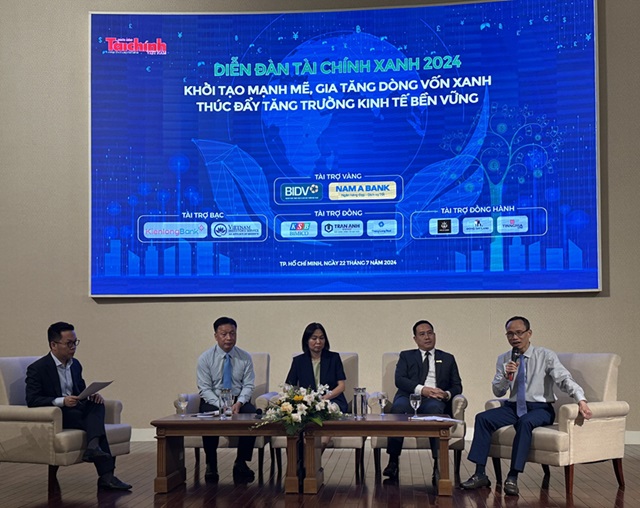
Speakers at the forum on July 22
|
Dr. Luc informed that as of Q1 2024, green credit outstanding debt in Vietnam reached nearly VND 637,000 billion (at 47 credit institutions), accounting for about 4.5% of the total outstanding debt of the economy.
The outstanding debt assessed for environmental and social risks reached about VND 2.9 million billion, accounting for more than 21% of the total outstanding debt of the credit institution system and an increase of more than 20% compared to the same period in 2023.
Along with the development, Mr. Luc noticed that the green finance system in Vietnam still faces many challenges.
For instance, there is a lack of legal framework and comprehensive policies related to green finance, such as the absence of regulations on green classification and confirmation of projects eligible for green credit and green bond issuance.
Additionally, the assessment, evaluation, and management of environmental and social risks are challenging due to a limited number of experts and personnel in this field in Vietnam.
The lack of mechanisms for coordination and incentives for green finance activities, such as tax and fee incentives, credit limits, and interest rate preferences, is also among the existing challenges, according to Mr. Luc.
Moreover, green projects often have long durations, up to 20 years, and require substantial investment. In contrast, the lending sources of credit institutions are usually short and medium-term funds.
Mr. Luc added that many listed companies are not proactive in incorporating ESG (environmental, social, and governance) standards into their business orientation and corporate governance. The market’s awareness of ESG, green finance, and sustainability is not high and evenly distributed. The issuance of green stocks is almost non-existent, and sustainability reports are limited.
Also, at the forum, Mr. Vu Chi Dung – Director of the International Cooperation Department, State Securities Commission stated that the challenges in developing Vietnam’s green capital market include an incomplete legal framework. Enterprises do not grasp the long-term benefits of sustainable development and lack knowledge about green finance.
At the same time, mechanisms and policies to encourage enterprises to issue and investors to participate in green financial products are limited. In addition, the lack of active involvement from independent assessment service providers before and after issuance poses a challenge to the market’s development.
What are the solutions to promote the green capital market?
To promote the development of the green capital market, Dr. Can Van Luc proposed a series of solutions, including establishing a refinancing fund and offering green credit packages with preferential interest rates.
Credit institutions should also consider developing dedicated assessment processes for green credit. Simultaneously, units need to provide products and services suitable for different sectors or specific to green credit.
Enhancing awareness and training for officers in areas such as ESG, renewable energy, and green production and consumption is crucial to ensure more appropriate and effective assessment, product design, and risk management.
Mr. Vu Chi Dung suggested that units should strengthen international cooperation in building and developing the green capital market, aiming to implement good practices in the securities market associated with green growth.
Related units need to study and restructure the VNSI index (sustainability index) to align better with the context of sustainable development in the current stock market.
Capital Raising for Sustainable Growth
The trend of greening the economy is becoming increasingly popular worldwide, and Vietnam is no exception. As a result, the demand for green credit is also growing, aiming to promote the transition to a green economy and sustainable development. However, the domestic source of green credit is still limited, necessitating the need to expand the funding for this sector.
Low-carbon economic development: The “must-haves” for achieving a circular economy.
With a commitment to achieving net-zero emissions in Vietnam by 2050 and a commitment to combating deforestation in accordance with the EU Forest Law Enforcement, Governance and Trade (FLEGT) regulations by the end of 2024, we aim to move towards a low-carbon economy, paving the way for circular economic development for businesses.
Strong and Practical Implementation of ESG Strategy at Masan
Masan, a leading Vietnamese company in the Consumer-Retail sector with billions of dollars in market capitalization, is not only known for its business achievements but also for pioneering the integration of ESG (Environmental, Social, and Governance) strategies into its operations. By prioritizing sustainable development, Masan aims to create a positive impact on both the company and the community as a whole.

